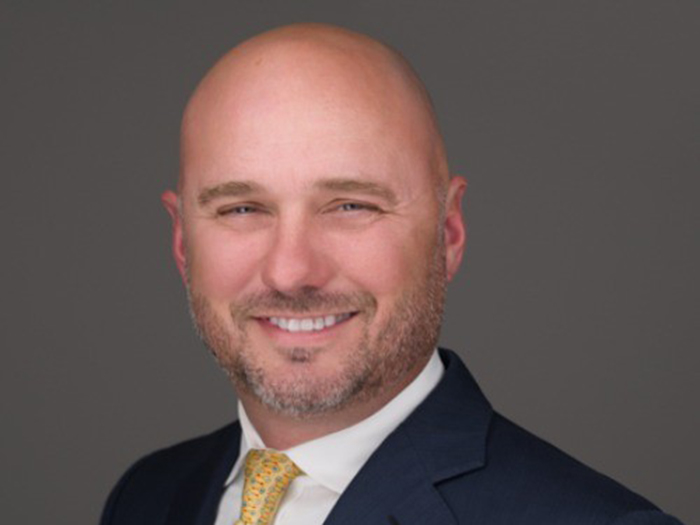Water Park Risks
No Room for Error

Everyone’s familiar with the traditional summertime risks of poolside slips, falls and drownings. But now a whole new cadre of water park risks is coming into play.
They include a heightened risk of active shooter situations or civil unrest, bacterial infestation and camera-equipped drones.
Exposures are also increasing because water parks continuously develop new features, and more and more are now open year-round, said Bob Murphy, global sports and events practice leader at Marsh in Philadelphia.
“Water parks are no different than any other entertainment organization — they are always looking for the next best attraction, the newest ride — it’s all about fun and excitement,” Murphy said.
Moreover, many water parks have become destination resorts not limited to outdoors venues, he said.
One new potential risk exposure that is entering the world of outdoor activity is the public’s growing use of camera-equipped drones, said Michael Greear, director, risk control at Aon Risk Services in Denver.
Technological advances in these flying cameras have made them more affordable and accessible to the general public, leading to concerns about drone collisions as well as invasion of privacy issues.
“Water park operators should consider the development of a drone use/non-use policy and communicate this to all staff and water park guests through training of staff to signs in the park to messages on websites,” he said.
Frequent Exposures
“Operators need to have a very specific skills set on their management team if they are going into the water park business,” said Franceen Gonzales, executive vice president, business development at WhiteWater West Industries Ltd. in Richmond, British Colulmbia, Canada, a manufacturer of water park and amusement attractions.
The three biggest risks in the water park business are water quality, bather supervision, and attraction operations, she said.
Gonzales serves as a board member for various safety-related organizations, including the technical committee for the Centers for Disease Control-hosted Model Aquatic Health Code (MAHC).
For water quality standards, sometimes even separate counties within a state have their own code, so it’s important to review all applicable regulations, she said.
“The MAHC takes into account the scientific research and new technology that’s been developed since most state codes were formed over 30 years ago.” — Franceen Gonzales, executive vice president, business development, WhiteWater West Industries Ltd.
The CDC’s MAHC was recently created to provide model language for states to adopt, which could improve consistency across the country. “The MAHC takes into account the scientific research and new technology that’s been developed since most state codes were formed over 30 years ago,” Gonzales said.
“This is a great resource on how to manage water quality and other safety considerations in aquatic environments.”
One potential risk is water-borne illnesses from bacteria such as cyclosporidium, Murphy said.
The chlorine used in water park pools may kill 99.9 percent of the bacteria, but a minute risk remains, he said.
“Lifeguards also have to be hyper-vigilant about watching for people with open cuts, such as when a kid’s Band-Aid falls off, a bike scrape, or when somebody takes a spill and cracks their head open and bleeds,” he said.
“The entire area needs to be disinfected before they let anyone back into the area.”
Another risk is posed by common filtration and recirculation pump systems, such as when multiple pools are being operated at the same location, Greear said.
If blood or fecal matter contaminates one pool, water park operators need to respond to the reality that other pools could also be indirectly contaminated through the common filtration system, he said.
Regularly testing the water for the appropriate chemical balance is important, he said, noting that before a park is built, the design should take into account all water-borne risks.
Substantial Business Interruption
A major issue for water park operators is business interruption, especially if it is a seasonal park that makes virtually all of its revenue over a fairly short period of time, Murphy said.
Parks that depend on summer for their revenue cannot afford to be shut down, particularly for a contingent business interruption, such as in the event of a riot or water main break.
“We also get parks to think and train for the unthinkable catastrophic event, such as an active shooter situation,” Murphy said.
A more common exposure is slips, trips and falls, given the wet surfaces on pool decks, slide ladders, stairways and locker rooms, said Greear.
“We also get parks to think and train for the unthinkable catastrophic event, such as an active shooter situation,” — Bob Murphy, global sports and events practice leader, Marsh, Philadelphia.
They are often not high-dollar claims, but “frequency often breeds severity,” he said.
In addition to posting no running rules and trying to enforce compliance, some parks have installed abrasive strips to minimize accidents, Greear said.
This is particularly helpful when adults are the transgressors — “it can be tough for a young, 18-year-old worker to tell a 45-year-old what not to do.”
When risk managers and safety engineers are involved in the park’s design discussions, they can offer input on what sort of materials should be used on the decks, tiles and other surfaces, he said.
Water slides and other attractions also need to be well-designed and engineered, fabricated with quality, well-installed, and tested prior to opening to the public, Gonzales said.
They also need to comply with industry standards, state-specific codes and manufacturers’ instructions, she said.
Collapsing water slides can result in injury or death, Murphy said. Parks should document every inspection of their slides, and immediately fix every issue, no matter how minor.
Swimmers in Distress
As for bather supervision, parks should focus not just on prevention, but on managing the diverse risks posed by different types of aquatic venues. Training staff to be able to recognize someone in distress and have the ability to reach that person quickly is crucial.
The training organization credited with developing the 10-20 protection standard for lifeguards is Jeff Ellis & Associates Inc., said Richard Carroll, the firm’s chief operating officer.
“Lifeguards have a zone of protection — a defined area where they are able to scan the entire zone of water within 10 seconds, and be capable of physically reaching a distressed swimmer within 20 seconds,” Carroll said.
“Parks should overlap these zones so that multiple lifeguards are scanning areas that are adjacent to each other.”
Wave pools generally have such zones, but that’s not the case at most catch pools for slides and other attractions, which typically have a two- to four-person maximum bather load, depending on the depth of the water, he said.
“The single most important factor in being able to maintain a drowning-free environment is lifeguard vigilance and attentiveness,” Carroll said. It requires foundational and continuous vigilance training as well as proactive supervision of the lifeguards on duty.
Ellis’ vigilance awareness training program uses live employees or mannequins, putting them at the bottom of the pool in certain lifeguard zones during the day to see how fast lifeguards react and reach the object. The firm’s clients conduct hundreds of these drills throughout the season, and remediation is provided if needed.
“The drills become so commonplace, we have patrons who frequent our clients’ facilities going back to their community pools and telling managers they need to be doing the same things,” he said.
Operators should also ensure that lifeguard staff regularly rotate positions, said Charles Landrum, director of underwriting at Specialty Insurance Group in Carmel, Ind., because when lifeguards sit in the same place for a long period of time, their minds begin to gloss over important details.
“Unlike other amusement options, there really isn’t any margin for error when it comes to the water park business.” — Charles Landrum, director of underwriting, Specialty Insurance Group
He said the quality of management is the most important factor when underwriting policies for water parks.
“We clearly want an operation that has the latest state-of-the-art safety equipment, which could be devices that eliminate water-borne illnesses, or water suction lines to prevent hair or body entrapment, or the types of chemicals used to treat the water, how they are handled and stored,” Landrum said.
Having a robust aquatic safety management program is also very important to underwriters.
“Unlike other amusement options, there really isn’t any margin for error when it comes to the water park business,” he said.
“For an amusement park kiddie ride that has adequate restraints, if an operator has a momentary distraction there won’t be catastrophic consequences.
“But in the water park business, any distraction could have catastrophic results,” Landrum said.











